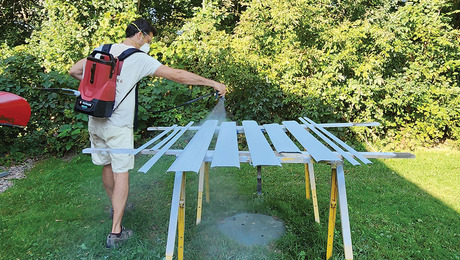Dehumidifier in Unvented Crawlspace
We’re working with a contractor to fix our crawlspace foundation. It’s failing due to frost heave and I suspect will have to be repoured. Currently it’s vented and unconditioned, but I’d like to make it unvented and use a dehumidifier for moisture. We’re in the Northeast so cold (and moisture) are a concern for me, but our house is not always conditioned. Currently there’s a tight access opening covered by insulated plywood on the outside wall and there is no electrical access within the crawlspace itself. Where should the dehumidifier be located and drain to? To the interior basement drain or to the outside and if to the outside, what’s the best way to do that? And should we open up part of our basement wall to access the crawlspace and use our whole house dehumidifier or get a separate dehumidifier for the crawlspace and keep the access on the outside wall? Thanks!
















Replies
In NW Ohio it is my opinion that a vented crawl is more problem than it’s worth. It may go against popular thinking, but here’s my reasoning.
A dry crawl in the summer. Open vents? Warm moist air will condense on the cooler foundation walls. Insulate on the inside? Visqueen over the ground?
Maybe.
Winter? Close the vents?
I’d concentrate on proper waterproofing and exterior drainage. We used a compressed fiberglass insulation over blackjack on our half in the ground (hillside) foundation and have had no moisture nor water entry. In essence, we live in the basement.
Of course, your mileage may vary. Retired carpenter in NW Ohio.
Oh yea, no gutters and a 2’ overhang hip. Water flows downhill.
I totally agree! The contractor is going to do what I want him to do, but he's going to need specific instructions about how to do so. Good help is very hard to find around here, unfortunately.
Did you use fiberglass over blackjack on the walls or on the floor too? Our crawlspace floor is earthen and I'm trying not to pour concrete there too. Code requires more than just preventing moisture getting in, though.
These are the options and dehumidification seems like the best choice, I'm just not sure how to provide it:
2.1.Continuously operated mechanical exhaust ventilation at a rate equal to 1 cubic foot per minute (0.47 L/s) for each 50 square feet (4.7 m2) of crawl space floor area, including an air pathway to the common area (such as a duct or transfer grille), and perimeter walls insulated in accordance with Section N1102.2.10.1 of this code.
2.2.Conditioned air supply sized to deliver at a rate equal to 1 cubic foot per minute (0.47 L/s) for each 50 square feet (4.7 m2) of under-floor area, including a return air pathway to the common area (such as a duct or transfer grille), and perimeter walls insulated in accordance with Section N1102.2.10.1 of this code.
2.3.Plenum in existing structures complying with Section M1601.5, if under-floor space is used as a plenum.
2.4.Dehumidification sized in accordance with manufacturer’s specifications.
What method might be considered for replacing the foundation?
Is this a cast-in-place concrete foundation or is it concrete (cinder) block?
If it involves lifting the home off the foundation (many are being done in my area of CT - for different reasons) to provide the necessary clearance to remove the old and place concrete for the new, you might even consider creating a full basement.
If the existing failed from frost heave or soil settlement, you'd be better served with a deeper more robust foundation. Exactly what that is depends on the immediate soil conditions.
Not enough info for a more specific suggestion.
[CT-MA-RI-NY licensed structural engineer]
We haven't determined a method, so appreciate any suggestions you have there too. I believe we can only jack up the living space above by a few inches though. And there is a lot of clay in our soil.
You're on the right track with making your crawl space unvented and using a dehumidifier to manage moisture, especially in the Northeast. For the dehumidifier, draining to an interior basement drain is ideal to avoid freezing issues in winter. Draining outside is possible, but you’d need freeze-proof solutions like a condensation pump with heat tape. If you can, opening part of the basement wall and using your whole-house dehumidifier could be more efficient and convenient. However, if the house isn’t always conditioned, a separate dehumidifier for the crawlspace might give you better control. It depends on what’s easier for you and how much access you want.
Thank you so much, this is really helpful! The contractor is expressing concern about the dehumidifier because of lack of airflow in the crawlspace. He thinks it just won't work because there's nothing circulating air down there. Do we need some way to bring in outside air without losing the insulating benefits?